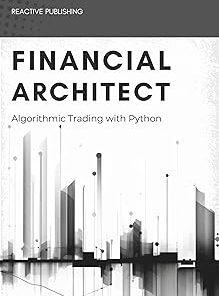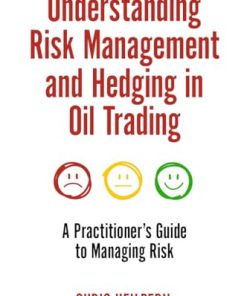(eTextbook PDF) for Energy Trading & Hedging: A Nontechnical Guide
$50.00 Original price was: $50.00.$24.50Current price is: $24.50.
(eTextbook PDF) for Energy Trading & Hedging: A Nontechnical Guide – Digital Instant Dowload.
(eTextbook PDF) for Energy Trading & Hedging: A Nontechnical Guide – Digital Instant Dowload.

Product details:
- ISBN-10 : 1593704747
- ISBN-13 : 978-1593704742
- Author: Tom Seng MBA
This book focuses primarily on the energy products that are financially traded on the New York Mercantile Exchange: crude oil, natural gas, unleaded gasoline, and heating oil. These commodities are the most common ones used for hedging energy commodity risk. Each of these products has a profound effect on the United States and international economies. It discusses several of the factors that influence energy price direction, the financial instruments used in the market, and how commercial entities utilize these instruments to hedge the risks inherent in energy production and consumption, such as price and physical risk. It also addresses the use of energy financial derivatives strictly for profit (speculative trading) and the exchanges that make efficient and competitive trading possible. The physical cash market is addressed along with the major industry publications that produce market prices, known as postings or indexes. Additionally, the book briefly discusses technical analysis, using charts to identify price trends and predict directional changes.
Table of contents:
- Chapter 1: Energy Markets Fundamentals
- 1.1 Physical Forward and Futures Markets
- 1.2 Spot Market
- 1.3 Intraday Market
- 1.4 Balancing and Reserve Market
- 1.5 Congestion Revenue Rights, Financial Transmission Rights, and Transmission Congestion Contracts
- 1.6 Chapter Wrap-Up
- References
- Chapter 2: Quant Models in the Energy Markets: Role and Limitations
- 2.1 Spot Prices
- 2.2 Forward Prices
- 2.3 Chapter Wrap-Up
- References
- Chapter 3: Plain Vanilla Energy Derivatives
- 3.1 Definition of Energy Derivatives
- 3.2 Global Commodity Exchanges
- 3.3 Energy Derivatives Pricing Models
- 3.4 Settlement
- 3.5 Energy Derivatives Quant Models: Role and Limitations
- 3.6 Options
- 3.7 Vanilla Options
- 3.8 European Options
- 3.9 American Options
- 3.10 Swaps
- 3.11 Swaps to Futures
- 3.12 Chapter Wrap-Up
- References
- Chapter 4: Exotic Energy Derivatives
- 4.1 Asian Options
- 4.2 Barrier Options
- 4.3 Digital Options
- 4.4 Real Options
- 4.5 Multiasset Options
- 4.6 Spread Options
- 4.7 Perpetual American Options
- 4.8 Compound Options
- 4.9 Swaptions
- 4.10 Swing Options
- 4.11 Chapter Wrap-Up
- References
- Chapter 5: Risk Management and Hedging Strategies
- 5.1 Introduction to Hedging
- 5.2 Price Risk
- 5.3 Basis Risk
- 5.4 The Option “Greeks”
- 5.5 Delta Hedging
- 5.6 Gamma Hedging
- 5.7 Vega Hedging
- 5.8 Cross-Hedging Greeks
- 5.9 Quant Models Used to Manage Energy Risk: Role And Limitations
- 5.10 Chapter Wrap-Up
- References
- Chapter 6: Illustrations of Hedging with Energy Derivatives
- 6.1 Hedging with Futures Contracts
- 6.2 Hedging with Forward Contracts
- 6.3 Hedging with Options
- 6.4 Hedging with Swaps
- 6.5 Hedging with Crack Spread Options
- 6.6 Hedging with Spark Spreads
- 6.7 Hedging with Other Energy Derivatives
- 6.8 Chapter Wrap-Up
- References
- Chapter 7: Speculation
- 7.1 Convergence of Energy and Financial Markets
- 7.2 Trading Terminology
- 7.3 Energy Products Trading Codes
- 7.4 Futures Trading Symbols: Month Code Abbreviation
- 7.5 Fundamental and Technical Analyses
- 7.6 Trading Tools: Charts and Quotes
- 7.7 Energy Trading Market Participants
- 7.8 Speculation in the Oil Markets
- 7.9 Speculation in the Electricity Markets
- 7.10 Speculation in the Natural Gas Markets
- 7.11 Chapter Wrap-Up
- References
- Chapter 8: Energy Portfolios
- 8.1 Modern Portfolio Theory
- 8.2 Energy Portfolio Management
- 8.3 Optimization of Electricity Portfolios
- 8.4 Optimization of Gas Portfolios
- 8.5 Other Energy Portfolio Management Models
- 8.6 Chapter Wrap-Up
- References
- Chapter 9: Hedging Nonlinear Payoffs Using Options: The Case of a New Subsidies Regime for Renewables
- 9.1 Renewable Energy, Options Pricing, and Government Subsidies
- 9.2 Government Subsidies as a Stochastic Process
- 9.3 Impact of Embedded Options and Stochastic Subsidies on Pricing and Risk Management
- 9.4 Chapter Wrap-Up
- References
- Chapter 10: Case Study: Hydro Power Generation and Behavioral Finance in the U.S. Pacific Northwest
- 10.1 An Overview of Behavioral Finance
- 10.2 Behavioral Finance in Energy Economics
- 10.3 Power Generation in the Pacific Northwest
- 10.4 Behavioral Financing of Projects in The Pacific Northwest
- 10.5 Northwest Power Planning
- 10.6 Chapter Wrap-Up
- Reference
Title tag
Master Energy Trading & Hedging with Our Comprehensive Non-Technical Guide
Simplify Energy Trading & Hedging – A Beginner Friendly Guide
Understand Energy Trading & Hedging Better with Our Non-Technical Guide
You may also like…
Business & Economics - Personal Finance
The Trading Mindwheel: Eight Essential Skills for Trading Mastery 1st edition
Engineering - Energy & Power Resources
Uncategorized
Computers - Algorithms and Data Structures
Algorithmic Essentials: Trading with Python: Your Comprehenive Guide for 2024 Van Der Post
Uncategorized
Uncategorized
Uncategorized
Financial Architect: Algorithmic Trading with Python: A comprehensive Guide for 2024 1st Edition
Uncategorized
Business & Economics - Management & Leadership












